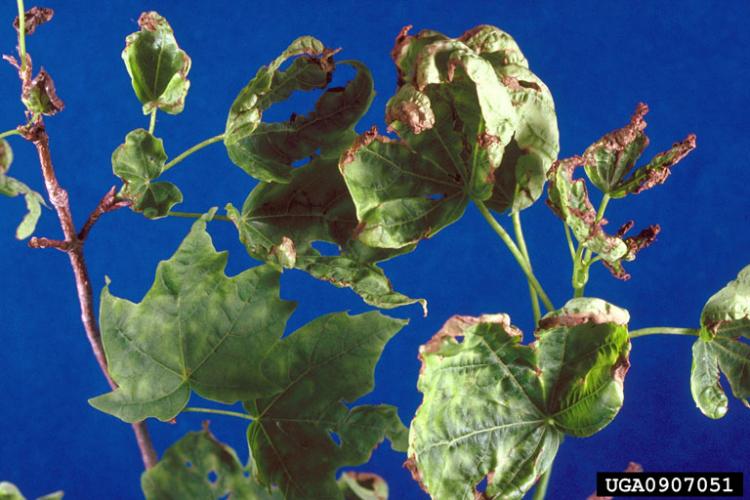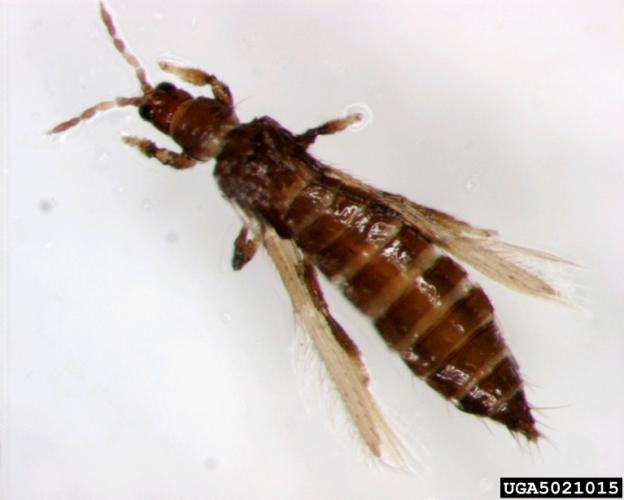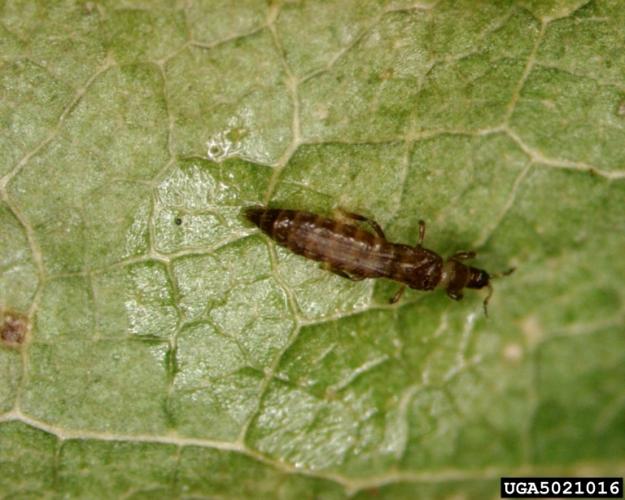Pear Thrips
Identification
Pear thrips, Taeniothrips inconsequens, are an insect. They cause leaf deformation and defoliation of many tree species including maples (especially sugar maple), birch, ash, black cherry, beech, and fruit trees.
signs and symptoms
Pear thrips feeding causes leaves to be dwarfed, mottled yellow to green-brown, and distorted. Veins and petioles of leaves may develop blister-like scars. The crown of the host tree thins, resembling late frost damage. Damage may result in premature leaf drop in early fall.
See image slideshow above for signs and symptoms.
Biology
Origin
Pear thrips are native to Europe and were introduced into California in 1904. Since then they have spread throughout the United States and have proven to be an economically important pest to plum, cherry, apple, and pear crops. They were recognized as a serious forest pest in 1979, after they were linked to widespread defoliation in Pennsylvania.
Life Cycle
- One generation per year
- Adults emerge from underground in April and begin feeding and laying eggs on foliage and flowers of host trees
- Adults may be present, in the Northeast, from March to May
- In late May, the larvae drop from the tree canopy and go in the soil where they pupate and become adults in the fall
- Most of the year is spent underground, not feeding
- Only female pear thrips have been found in North America (In Europe, they have found both sexes)
- Both adults and larvae feed on young leaves, flowers, and fruits
ECological threat
Pear thrips periodically reach outbreak levels. This usually reduces tree vigor, but most trees recover.
Vermont Distribution
Pear thrips has spread throughout Vermont.
Citations
Photo Credit
Pennsylvania Department of Conservation and Natural Resources - forestry, Bugwood.org
Ronald S. Kelley, VT Department of Forests, Parks and Recreation, Bugwood.org
information credit
Cornell University: Sugar Maple and the Pear Thrips


